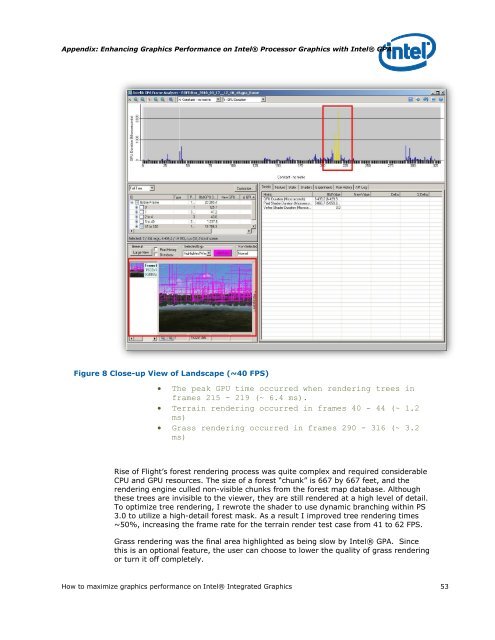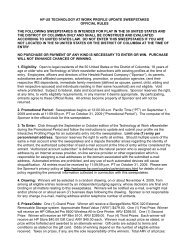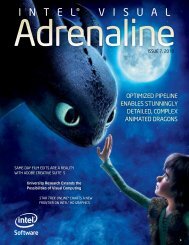Intel HD Graphics DirectX Developer's Guide (Sandy Bridge)
Intel HD Graphics DirectX Developer's Guide (Sandy Bridge)
Intel HD Graphics DirectX Developer's Guide (Sandy Bridge)
You also want an ePaper? Increase the reach of your titles
YUMPU automatically turns print PDFs into web optimized ePapers that Google loves.
Appendix: Enhancing <strong>Graphics</strong> Performance on <strong>Intel</strong>® Processor <strong>Graphics</strong> with <strong>Intel</strong>® GPA<br />
Figure 8 Close-up View of Landscape (~40 FPS)<br />
The peak GPU time occurred when rendering trees in<br />
frames 215 - 219 (~ 6.4 ms).<br />
Terrain rendering occurred in frames 40 - 44 (~ 1.2<br />
ms)<br />
Grass rendering occurred in frames 290 - 316 (~ 3.2<br />
ms)<br />
Rise of Flight‟s forest rendering process was quite complex and required considerable<br />
CPU and GPU resources. The size of a forest “chunk” is 667 by 667 feet, and the<br />
rendering engine culled non-visible chunks from the forest map database. Although<br />
these trees are invisible to the viewer, they are still rendered at a high level of detail.<br />
To optimize tree rendering, I rewrote the shader to use dynamic branching within PS<br />
3.0 to utilize a high-detail forest mask. As a result I improved tree rendering times<br />
~50%, increasing the frame rate for the terrain render test case from 41 to 62 FPS.<br />
Grass rendering was the final area highlighted as being slow by <strong>Intel</strong>® GPA. Since<br />
this is an optional feature, the user can choose to lower the quality of grass rendering<br />
or turn it off completely.<br />
How to maximize graphics performance on <strong>Intel</strong>® Integrated <strong>Graphics</strong> 53













